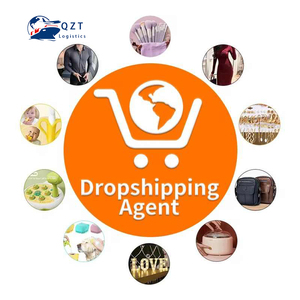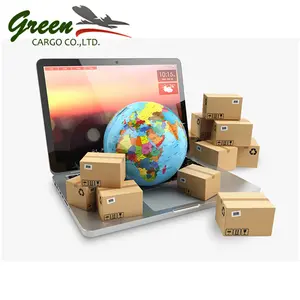Dropshipping Shop Examples















































About dropshipping shop examples
Where to Find Dropshipping Shop Examples and Service Providers?
China remains a central hub for dropshipping logistics and supply chain solutions, with key operational clusters in Shenzhen, Yiwu, and Guangzhou. These cities host specialized freight forwarders and international transportation firms that integrate e-commerce platforms with end-to-end fulfillment services. Shenzhen-based suppliers leverage proximity to Shekou Port and Hong Kong’s air cargo infrastructure, enabling express delivery timelines of 7–12 days to North America and Europe. Yiwu, known globally as a small-commodity trading center, offers direct access to high-volume consumer goods, facilitating low minimum order quantities (MOQs) and rapid product sourcing. Guangzhou benefits from Baiyun International Airport’s extensive cargo network, supporting fast airlift dispatches for time-sensitive shipments.
These regional ecosystems enable streamlined integration between online stores and fulfillment operations. Suppliers typically operate multi-modal logistics networks—combining LCL sea freight, air express, and last-mile carrier partnerships—to serve diverse client needs. Economies of scale are achieved through consolidated warehousing, automated order processing, and API-level integrations with major e-commerce platforms. Buyers benefit from reduced handling costs, scalable fulfillment capacity, and flexible shipping options tailored to B2C dropshipping models.
How to Choose Dropshipping Shop Example Suppliers?
Selecting reliable partners requires structured evaluation across three core dimensions:
Operational Reliability
Assess on-time delivery rates as a primary performance indicator. Top-tier suppliers maintain on-time fulfillment exceeding 95%, with response times under 6 hours. Prioritize companies reporting reorder rates above 30%, which indicate customer retention and service consistency. Verify real-time tracking capabilities and confirm integration with destination-market carriers to ensure transparency throughout the shipment lifecycle.
Service Structure and Scalability
Evaluate pricing models and MOQ frameworks:
- Per-kilogram pricing ranging from $0.20–$1.50 supports cost-efficient scaling for lightweight goods
- Per-piece or per-bag structures ($0.70–$1.25) suit boutique or high-margin product lines
- Suppliers offering free warehouse storage reduce upfront holding costs and simplify inventory management
Cross-reference declared online revenue (e.g., US $60,000+) with service scope to assess scalability. High-volume operators often support Shopify, Etsy, and B2C store integrations with automated order routing.
Customization and Product Flexibility
Confirm availability of value-added services such as private labeling, packaging customization, and logo printing. Leading providers offer configurable options across color, material, size, and branding elements. For niche markets (e.g., wigs, reusable bags), verify category-specific expertise and catalog breadth. Direct supplier access to winning product databases enhances market responsiveness and reduces time-to-market.
What Are the Best Dropshipping Shop Example Suppliers?
| Company Name | Location | Primary Pricing Model | Min. Order | On-Time Delivery | Avg. Response | Reorder Rate | Online Revenue | Specialized Services |
|---|---|---|---|---|---|---|---|---|
| Shenzhen Wayota International Transportation Co., Ltd. | Shenzhen, CN | $0.80–1.10/kg | 50 kg | 78% | ≤6h | 25% | US $30,000+ | LCL shipping, business store integration |
| Shenzhen Hongyuexiang Freight Forwarding Co., Ltd | Shenzhen, CN | $0.39–1.50/kg | 1 kg | 95% | ≤4h | 34% | US $60,000+ | Winning product sourcing, container agent services |
| Guangzhou Manyidi Logistics Supply Chain Co., Ltd. | Guangzhou, CN | $0.20–0.56/kg | 1 kg | 100% | ≤4h | 20% | US $1,000+ | Airlift express, sea freight management |
| Yiwu Eway International Logistics Co., Ltd. | Yiwu, CN | $0.70–1.00/unit | 1 piece | 100% | ≤4h | 40% | US $2,000+ | Custom packaging, Shopify/Etsy integration |
| Global Dropshipping Limited | Hong Kong, CN | $0.85–1.25/bag | 1 bag | 92% | ≤5h | 23% | US $30,000+ | Free warehouse, handbag & accessory specialization |
Performance Analysis
Shenzhen Hongyuexiang stands out with the highest reported online revenue and competitive per-kilogram rates, making it suitable for high-volume operators. Yiwu Eway achieves the strongest reorder rate (40%) due to granular customization and single-piece fulfillment—ideal for startups testing product-market fit. Guangzhou Manyidi demonstrates perfect on-time delivery despite lower transaction volume, suggesting strong process control. Global Dropshipping Limited focuses on fashion accessories with defined category leadership, while Shenzhen Wayota serves broader industrial clients but exhibits lower delivery reliability. Buyers prioritizing speed and flexibility should favor suppliers with ≤4-hour response times and sub-1kg MOQs.
FAQs
How to verify dropshipping service provider reliability?
Cross-check declared on-time delivery rates with transaction histories via trade assurance programs. Request case studies or client references for order volumes similar to your requirements. Validate warehouse locations and carrier partnerships to assess logistical feasibility.
What is the typical lead time for dropshipped orders?
Standard processing takes 2–5 business days. Air express delivery to the US or EU averages 7–12 days; sea freight extends timelines to 25–40 days. Expedited handling and pre-stocked inventory can reduce processing to under 48 hours.
Can suppliers handle branded packaging and labeling?
Yes, many providers support full branding customization including logo application, custom box design, and instruction inserts. Minimum thresholds may apply, though some offer these services at no extra cost for recurring clients.
Do dropshipping agents offer product sourcing assistance?
Leading suppliers provide curated "winning products" databases and market trend analysis to identify high-demand items. They facilitate direct connections with manufacturers, reducing intermediaries and improving margin potential.
How are returns and damaged goods managed?
Most suppliers do not manage reverse logistics directly. Buyers must establish return policies with end customers and coordinate replacements through new shipments. Some premium providers offer inspection and repackaging services upon request.





















































































































